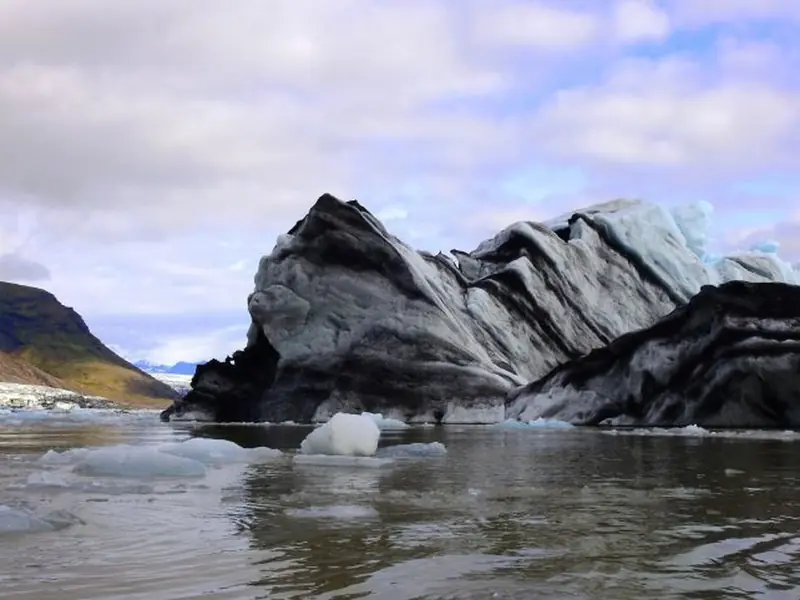The rare black iceberg was first spotted off the coast of Canada by Halur Antoniussen, a fisherman aboard the trawler Saputi. He shared a photo of the mysterious iceberg on social media, a sight few people are lucky enough to see even once in their lifetime. Antoniussen expressed his amazement at the iceberg’s color and shape. The image quickly caught the attention of glaciologists from Memorial University of Newfoundland, who shed some light on this natural wonder.
Icebergs Come in More Colors Than White
When we think of icebergs, we typically envision pristine white chunks of ice floating in frigid waters. They can also have delicate pale blue or bluish-green hues. However, it turns out that icebergs can be very dark, as reported by Science Alert. Icebergs appear white because they are filled with tiny air bubbles that scatter all wavelengths of light. As a piece of ice ages, it becomes denser, pushing out air and allowing more light to penetrate, making it transparent like glass. Longer red wavelengths are absorbed, while blue wavelengths are scattered, giving the ice a bluer appearance.
Icebergs are not always just frozen water. Other materials can mix with the ice as the chunks form. For instance, greener icebergs contain yellowish iron oxides. When these mix with blue ice, they create a green color.

What Causes the Black Color?
An iceberg takes on a black or dark gray hue due to the binding of dirt or other dark materials with the ice, such as when it rolls over a dark surface. Glaciologists explained that this black iceberg may have once been part of a large glacier that calved and fell into the ocean. Glaciers slide over land as they advance toward the ocean, picking up a lot of debris and mixing with it. It takes a long time for this debris to become as evenly distributed as in Antoniussen’s iceberg. Therefore, it’s likely that the chunk of ice spotted by the fisherman is quite old, possibly ranging from 1,000 to 100,000 years old.
Another theory from researchers suggests that the ice mixed with soot following a powerful volcanic eruption. Additionally, the black color could have formed from meteorite fragments embedded in the ice. There is currently no definitive answer regarding the nature of this iceberg’s coloration.
